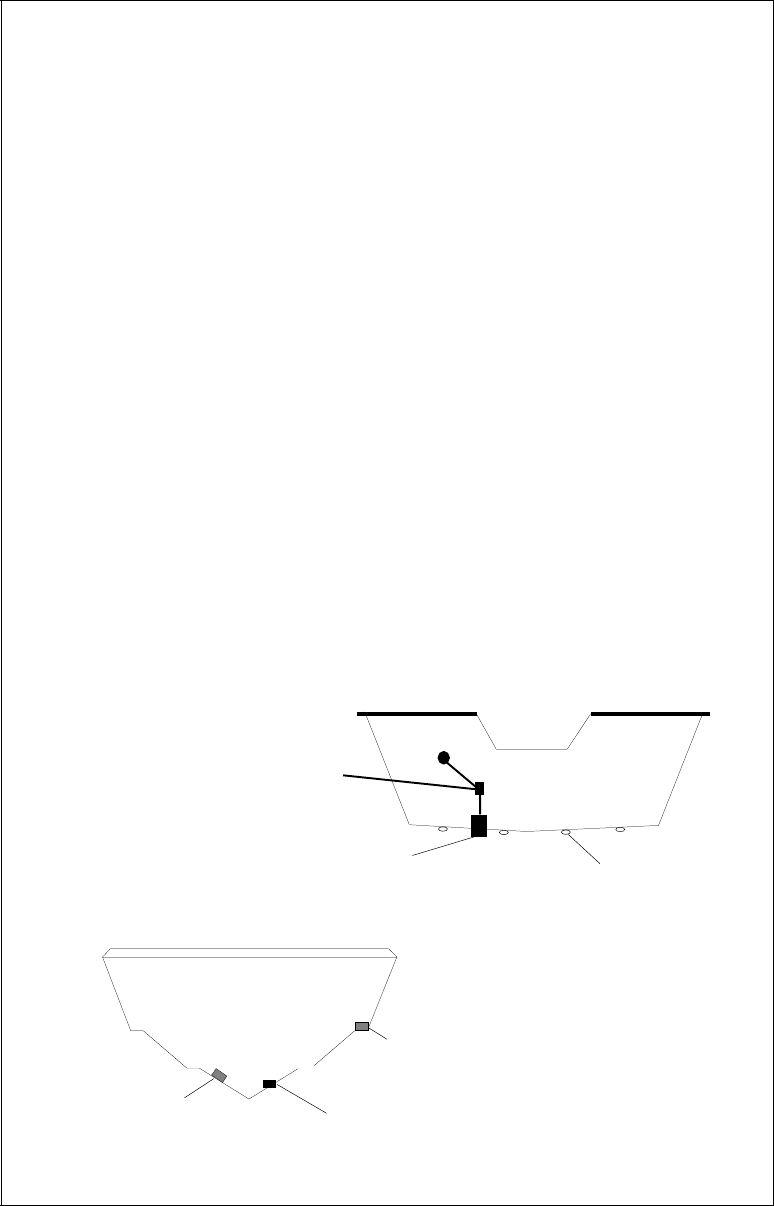
2
Transducer Location
1. The transducer must be placed in a location that has a smooth flow of
water at all times. If the transducer is not placed in a smooth flow of
water, interference will show on the sonar’s display in the form of ran-
dom lines or dots whenever the boat is moving and can completely
mask the sonar image at high speed.
2. The transducer should be installed with its face pointing straight down,
if possible.
3. Make certain the chosen location doesn’t interfere with the boat’s trailer.
Also, don’t mount it closer than about one foot from the engine’s lower
unit. This will prevent cavitation interference with the propeller. Typi-
cally, the transducer should be mounted as far down on the transom
as possible. This increases the chance that it will remain in the water
at high speed or sharp turns, and reduces the possibility of air bubble
interference (cavitation).
4. Don’t mount the transducer directly behind strakes or ribs on the bot-
tom of the hull. Typically, a good location on aluminum boats is be-
tween the ribs closest to the engine. The port (left) side of the transom
is preferred for mounting the transducer, however, if this is not pos-
sible, the starboard (right) side can be used, usually with good results.
POOR ANGLEPOOR ANGLE
POOR ANGLEPOOR ANGLE
POOR ANGLE
POOR LOCATIONPOOR LOCATION
POOR LOCATIONPOOR LOCATION
POOR LOCATION
GOOD LOCATIONGOOD LOCATION
GOOD LOCATIONGOOD LOCATION
GOOD LOCATION
CAUTION!
CLAMP THE TRANSDUCER CABLE TO
TRANSOM NEAR THE TRANSDUCER. THIS
WILL HELP PREVENT THE TRANSDUCER
FROM ENTERING THE BOAT IF IT IS
KNOCKED OFF AT HIGH SPEED.
GOOD LOCATIONGOOD LOCATION
GOOD LOCATIONGOOD LOCATION
GOOD LOCATION
RIBS ON
ALUMINUM
BOATS


















